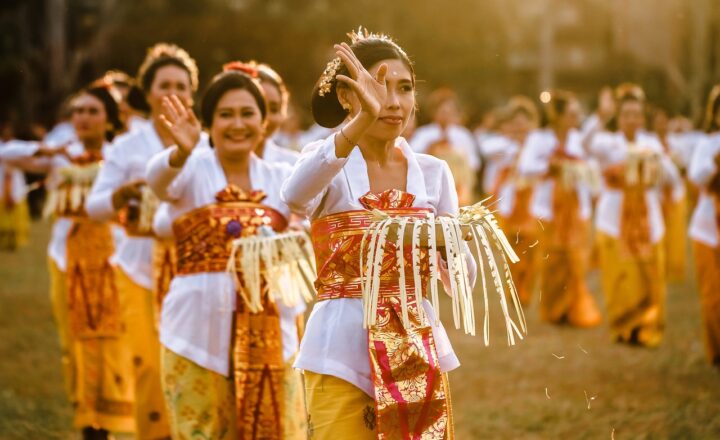Why Certain Traditions Seem to Defy the Test of Time
November 17, 2024

Traditions play a significant role in shaping societies and cultures around the world. From rituals that dictate rites of passage to culinary customs preserved through generations, the power of tradition is evident in every corner of the globe. Yet, some traditions appear to stand the test of time more resiliently than others, continuing to thrive in modern society despite rapid changes and advancements.
In this article, we will explore the factors that contribute to the endurance of certain traditions, looking at cultural, social, and psychological perspectives that anchor these practices in the hearts of individuals and communities.
1. The Roots of Tradition
Tradition is often understood as the passing of cultural beliefs, practices, and customs from one generation to the next. This transmission of knowledge is crucial for maintaining a sense of identity and belonging. The roots of a tradition can often be traced back to the historical context or events that birthed them.
Many traditions began as practical responses to environmental or social needs. For example, agricultural societies developed rituals around planting and harvest seasons to ensure bountiful crops and manage labor needs. As societies evolved, these practical components of traditions became imbued with deeper meanings and symbolic significance, enhancing their emotional resonance.
Today, the cultural and historical narratives wrapped around these age-old practices contribute to their relevance, allowing communities to connect with their heritage and identity. The stories told through these traditions not only respect the past but also inform present lifestyles and ethical frameworks.
2. The Role of Community in Sustaining Traditions
Community plays an integral role in the endurance of traditions. Shared practices create bonds among individuals, fostering a sense of belonging and identity. Celebrating cultural festivals, communal meals, and participation in rituals solidify relationships and reinforce group cohesion.
When traditions are practiced communally, they derive energy and significance from the collective experience. Communities often establish norms and expectations around these traditions, and when individuals deviate from them, there can be social pushback. This group dynamic reinforces traditional behaviors, encouraging adherence and participation.
Furthermore, communities invest in passing down traditions through education and active participation, ensuring that younger generations are exposed to these vital cultural tenets. Schools, mentorships, and family teachings are pivotal in nurturing an understanding of the tradition’s value within the community’s larger narrative.
3. The Psychological Appeal of Tradition
Traditions fulfill fundamental psychological needs that contribute to their resilience. Theoretical perspectives suggest that engaging in traditional practices provides individuals with a strong sense of continuity and stability in their lives. This is particularly relevant during times of change or uncertainty.
Traditions offer familiarity, comfort, and security, acting as anchors in a fast-paced world. They allow individuals to connect with their past and create a sense of predictability amid chaos. This psychological grounding encourages many to uphold traditions as a means of asserting their identity and values in a changing landscape.
Moreover, traditions often possess rituals and ceremonies that mark significant life events – births, marriages, and funerals. These rituals not only provide structure during transformative phases but also create shared experiences that deepen emotional connections between individuals, further rooting the practice in their lives.
4. Adaptation – The Key to Longevity
While some traditions retain their historic forms, others demonstrate remarkable adaptability, evolving with the times while maintaining their core principles. This ability to adapt is crucial for ensuring that traditions remain relevant to contemporary society without losing their essence.
Adaptation can occur through various mechanisms, such as:
- Modernization: Certain traditions are modified to incorporate contemporary values or practices, allowing them to resonate with current societal norms. For instance, traditional ceremonies may adopt digital platforms for remote participation, broadening their audience and accessibility.
- Integration: Traditions can be blended with other cultural elements, fostering intercultural exchange and enhancing their appeal. This integration attracts new participants, further embedding the traditions within diverse communities.
- Innovation: Individuals may creatively reinterpret traditional elements, using innovation to create new expressions that maintain original meanings while appealing to new audiences. For example, traditional crafts may be transformed into contemporary fashion statements, renewing interest among younger generations.
This innovation nurtures longevity by inviting diversity and relevance into the tradition, ensuring its continued practice in a dynamic world.
5. Globalization and Cultural Hybridization
Globalization presents new opportunities for the spread of traditions across borders, resulting in cultural hybridizations that reaffirm the timelessness of specific practices. As communication and travel have become easier, traditions are often shared and embraced by different cultures, allowing them to transcend geographical boundaries.
For example, culinary traditions frequently merge with local flavors and methods due to globalization, resulting in a unique fusion that honors the original while becoming distinctively tied to a new culture. This hybridization breathes life into traditions, helping them adapt while preserving their unique historical significance.
Despite some concerns regarding cultural appropriation, the exchange of traditions fosters dialogues between cultures, promoting understanding and paving the way for new interpretations that keep these traditions alive and relevant.
Conclusion
Traditions have an enduring power that shapes identities, communities, and cultures. By understanding the factors contributing to their longevity, we gain insight into why certain practices defy the test of time, embracing the balance between heritage and modernity. Through the celebration of tradition, we preserve crucial narratives, foster connections, and shape a cultural landscape rich in history and meaning.
In our ever-evolving world, traditions continue to remind us of who we are and where we come from, ensuring that we honor the past while embracing the future.








